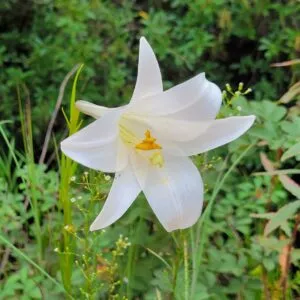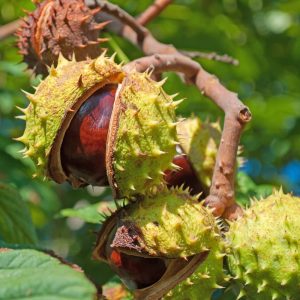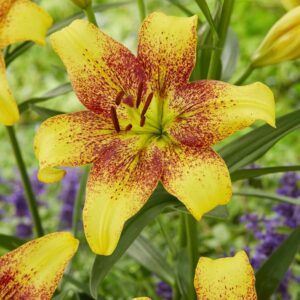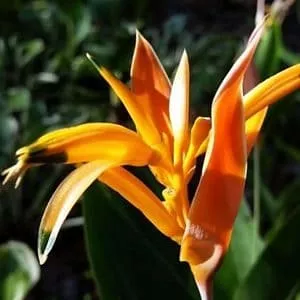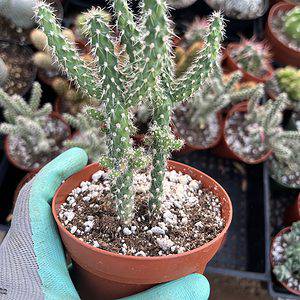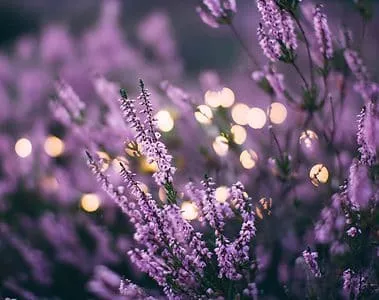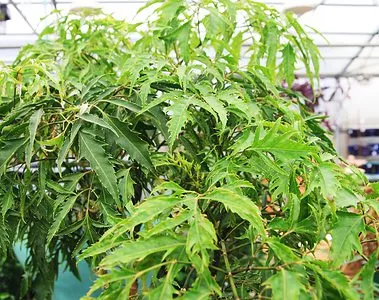No products in the cart.
Table of Contents
Adding this intriguing tropical climber plant will surprise you with stunning leaves.
This flowering plant not only looks fabulous with your modern home décor, but it also provides you with easy care, high impact, and long life. Meet the Rhaphidophora Decursiva, a sought-after variety found today. Unfortunately, you do not often find it in your local nursery or any garden center. However, Plantly has good news where you can find one, so make sure to keep reading.
What is Rhaphidophora Decursiva, and why is it a Sought-After Plant?
While called the “Creeping Philodendron”, part of the Araceae family that grows in the wild is not a monstera or philodendron. The plant’s habitat is in Southeast Asia, China, and India. However, luckily it has made its way into many homes, even yours. The foliage has broad leaves that change shape as it matures.
When small, the leaves have a blue-green oval shape and mature to 40 inches long and 20 inches wide. So best, to make sure you have ample space for this tropical plant to grow. In its natural habitat, it climbs trees and can exceed 50 feet in height.
However, if you plan to use it as a houseplant, it remains smaller, about five feet tall. The Rhaphido Decursiva is a hardy plant and simple to take care of with low maintenance. The flower looks stubby and has a yellowish covering making it look like corn.
Rhaphidophora Decursiva Classification
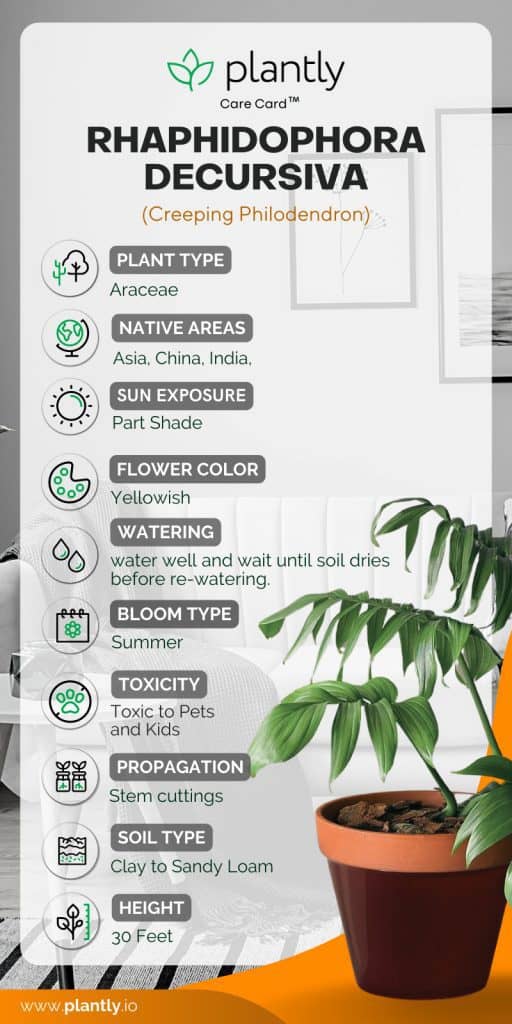
Rhaphidophora Decursiva Care Basics

One thing you will love about the Rhaphidophora Decursiva Juvenile is the low maintenance. Yet, it does have special care needs as a tropical plant. You will find the plant does not enjoy cold weather and is happiest in a room with average temperatures.
Humidity and Temperature
You love your plants and want the best for your Rhaphido Decursiva, right? Then it helps to know what temperature and humidity work best for it. This tropical beauty loves ambient temperatures ranging between 60 to 80 degrees F.
As mentioned, the plants are not fond of the cold and may need to move indoors when fall arrives. Furthermore, your indoor plant will adapt to low humidity indoors well. It helps to invest in a humidifier to provide consistent moisture for the plant.
Other Methods for Humidity:
- You can place a tray filled with damp pebbles underneath the pot.
- Place your plant in the bathroom or kitchen.
- Keep a jar of water nearby or group other plants with it.
- Prevent placing your houseplant near a cool or heat-vented area.
Ideal Lighting
You have now found the correct spot to place your Decursiva, but is the lighting right? The tropical plant is understory foliage and enjoys bright yet indirect sunlight. For this reason, we recommend placing it at least two feet back from a south-facing window, depending on where you live.
We also recommend keeping an eye on the light. If too intense, it can cause the leaves to scorch.
In stock In stock In stock In stock
Free Shipping
$8.98
Sold By:
CZ Grain
gigantic pumpkin seeds
Rated 4.60 out of 5 based on 156 customer ratings00
Sold By:
CZ Grain
Free Shipping
$3.50 – $8.00
Sold By:
Chill Hill Farms
Philippine Lily | Lilium Philippinese | Florida Grown
Sold By:
Chill Hill Farms
Free Shipping
$8.26
Sold By:
CZ Grain
2 Horse Chestnut Seeds for Planting – Amazing and Exotic Fruit Tree
Only 890 available and it’s in 1 people’s basket Rated 4.60 out of 5 based on 156 customer ratings01
Sold By:
CZ Grain
$10.00
Sold By:
Smoot's Farm
Lilium Asiatic Lily Golden Stone Yellow and Red Flower 3 bulbs
Rated 4.89 out of 5 based on 27 customer ratings00
Sold By:
Smoot's Farm
What Type of Pot Should You Buy?
For the best growth of your Decursiva plant, it needs a structure to climb. Depending on the pot you received, your plant will need repotting every year, and it is best to provide it with a wood pole covered with peat moss. Doing this increases the growth rate, and it will even climb walls.
How to transplant your houseplant will find it discussed later on in the article, so make sure to read to the end.
Recommended Potting Mix

While you may have received your plant in a vessel, it helps to know what the soil requirements are when transplanting to a new container. For example, your plant is aroid and needs moist, mildly acidic, well-drained soil. Plantly recommends you use:
- One part peat moss with one part coco coir
- Add one part perlite with one part vermiculite
- Mix it up well with 0.5 part sphagnum moss
Watering Needs
Your Rhaphidophora Decursiva Juvenile needs moist and well-drained soil to keep it thriving. Now do not go and overwater it as it will cause the roots to rot. For outdoor watering, you can follow these simple rules:
- Water deeply prevents too much watering when planted in the ground, meaning saturating the soil until the water penetrates about seven inches in depth. Then, if grown in a container, you can apply water to flow through the drainage holes.
- Water your plant early in the day or late afternoon, leaving enough time between watering for the soil to dry.
- You can use drip irrigation, xeriscaping, or mulching as it allows the water to go directly to the root and conserves moisture.
- From spring to summer, you can provide the plant with one inch of water a week during the growing season. However, if planted in the ground for the first time, it needs regular watering for the first two years.
If you decide to place your Decursiva inside, you can do the following:
- First, water it well and wait until the soil is dry before re-watering.
- Allow the water to flow freely through the drainage holes, avoid using cold water, and best use tepid water.
- You can place your plant in a pan filled with tepid water, leave it to stand for 15 minutes, and remove it, allowing the rest of the water to drain.
Fertilizer Requirement
Your plant has large leaves and needs a monthly application of fertilizer from spring to summer. During winter, you need not provide it with fertilization as it is dormant. For the best Decursiva fertilizer, you can use Growth Technology Nitrozyme or the Ionic Cal-Mag Pro.
When it comes to pruning, it does not need much except if you notice a yellowish leaf.

You will need to transplant your plant at least once a year, or if you notice, the new leaves are small. If there is no growth or the roots poke out the top or through the drainage holes, it is time to give it a new home. The best time to do this is in spring. Plantly recommends you follow these steps:
- Water the plant deeply three days before transplanting and again on the day you plan to do it.
- Tap it gently to remove the soil and roots from the side of the container. Lay the vessel on its side and gently wiggle to the root ball but do not pull it on the stem as it can snap. You do not want this happening.
- Brush away the old potting soil and make sure the roots are not dead, circled in the bottom, or discolored. If it is, use sanitized shears to snip them off.
- Place fresh soil at the bottom of the pot enough to place the root ball in and add the rest of the ground around it by gently compressing it with your fingertips.
- Tap the bottom of the vessel against the work surface to help the soil settle.
- If you have cut, the roots leave them for a couple of days to heal and spread the roots through the new soil before watering.
Propagation
You can do this using the cutting method by the stem or use air layering. We will help you with both these steps.
Cutting Method
Start by sterilizing your hands and tools. Then, take your container and fill it with a seed starting mix, and pole a hole in the potting soil to place your cutting.
- With your shears or scissors, cut the stem below a node; this is where the leaf joins the main stem.
- Remove the leaves except for two to three at the top.
- Dip the end into a rooting hormone and place it in the soil. Lightly pinch the ground around the stem using your thumbs or a pointer.
- Now you can place it in a humidity chamber or in a place where it can receive filtered light. You can make one using a plastic bag around the container. Alternatively, you can use a two-litre bottle by cutting off the bottom and placing it over the pot with the cap removed.
- Mist your cutting each morning for the first two weeks, and make sure to check it in the afternoon.
The important thing is to keep the soil moist. Remove any dead or dying cuttings in the third week and remove the dome. Now you can move your plant close to the light and provide it with some liquid fertilizer.
It can take up to two months, and if you can tug gently on the stem, it has established roots and can switch over to regular watering.
Air Layering
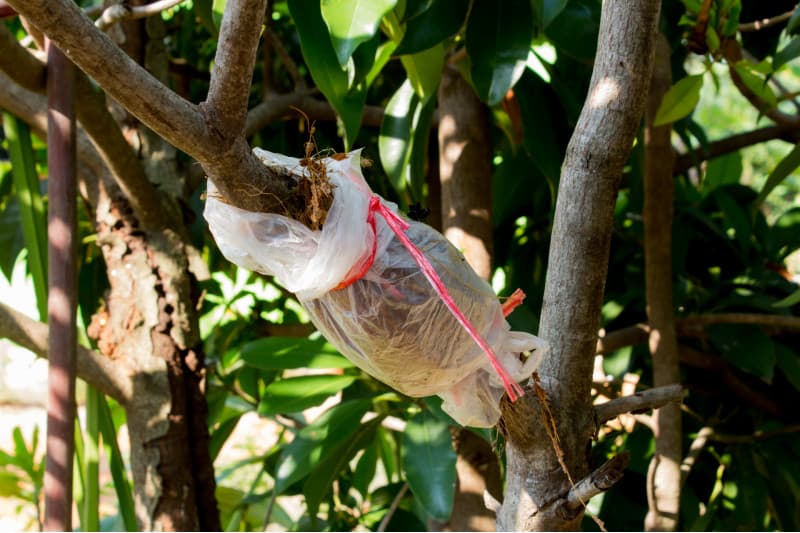
The technique works best with aerial roots growing outside the soil and is noticeable along with the leaf and main stem.
- Invest in some horticultural moss and dampen it. Place the strip around the stem with some twine or wire.
- The aerial root responds fast, winding through the moss and multiplies.
- Now cut the stem below the moss and plant the cutting in your new pot.
- Keep the potting soil moist for the first week and resume regular watering.
Growth Zone
Now that you decide you want this tropical beauty, Plantly recommends you first look if you can keep it in your place. The recommended growth zones are from 4a to 11 placed on a patio. But, of course, you can grow them as outdoor plants as well.
Rhaphidophora Decursiva Diseases & Pests
The excellent news is that Decursiva can sometimes face potential problems, but it is problem-free most of the time. Here are some of the things you can look for:
Leaf discoloration turning yellow can be of age and caused by cold temperatures, not enough fertilizer, or too much light.
Some plant diseases are the mosaic virus that infects the leaves and gives stunted growth, mosaic patterns from yellow to green on the leaves, malformation at the growing points, yellow streaking, or distinct yellow color on the veins. Unfortunately, there is no cure, and you need to remove the infected plant and discard it. It usually happens from contaminated tools or containers.
Common insects that can harm your plant are spider mites, scale, and Mealybugs. If you notice any of these pests, isolate your infected plant and remove as many of them as possible using cotton balls soaked in rubbing alcohol. For spider mites, you can shower them to wash them away.
Alternatively, you can use Neem oil or insecticidal soap.
Rhaphidophora Decursiva Varieties and Similar Plant
Now you may be wondering, is the Rhaphidophora Decursiva rare? Yes, it is, and you cannot find many varieties available. Many people refer to it as the Monstera Decursiva or the creeping philodendron but are not the same as either of them. Other synonyms for the plant are:
Philodendron Decursiva
Pothos Decursiva
Rhaphidophora Insignis
Rhaphidophora Affinis
Scindapsus Decursiva
Another species also causing a lot of confusion with the plant is the Epipremnum Pinnatum, as both have large pinnatifid leaves. However, the difference is that the E. Pinnatum has a leaf blade comprising tiny perforations compared to the scattered foliage leaves of the Decursiva.
Frequently Asked Questions
Some refer to the Decursiva; the creeping philodendron shares common characteristics with the Monstera but is not the same plant. Neither is there a species such as the Monstera Decursiva
According to many plant groups, a variegated version is around but rare, and there is no available information. The only other one we found is the Rhaphidophora Decursiva Juvenile that looks similar to the original one but is only a smaller version of it.
Yes, it is a climber, and if you plan to invest in one, it’s best to provide it with a climbing pole or plant it close to trees.
We said you should read to the end right. As the tropical plant is scarce and not available by many nurseries or garden centers, you can still buy one. Where right here at Plantly as we have the original available, not a Monstera or Philodendron (while you can find them with us as well) but this beautiful species to stand in your home.
Whether you want to buy, sell or simply reach out to other plant enthusiasts, Plantly is the right place to be!
In stock (can be backordered) In stock In stock In stock
Free Shipping
$21.99
Sold By:
Gar-Zen Botanical Design
Heliconia Psittacorum Parrot Heads Ship Free.
Only 3 available and it’s in 1 people’s basket Rated 4.86 out of 5 based on 49 customer ratings00
Sold By:
Gar-Zen Botanical Design
$10.99
Sold By:
Cacti and Exotica
Cylindropuntia Imbricata—Cholla Cactus
Rated 4.98 out of 5 based on 59 customer ratings01
Sold By:
Cacti and Exotica
$12.00
Sold By:
PotHedz Plants
Parlor Palm
Only 2 available and it’s in 1 people’s basket Rated 4.96 out of 5 based on 106 customer ratings00
Sold By:
PotHedz Plants
$19.99
Sold By:
Helios Plants
Haworthia Reinwardtii (in Portuguese tile vase)
Rated 4.73 out of 5 based on 120 customer ratings00
Sold By:
Helios Plants

